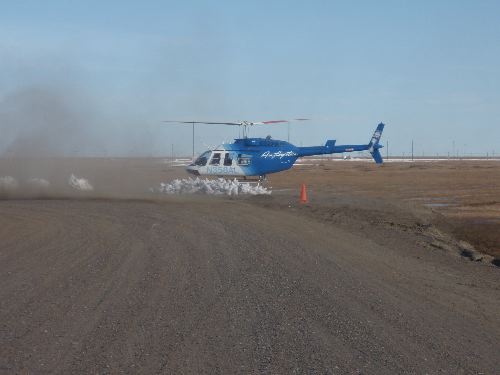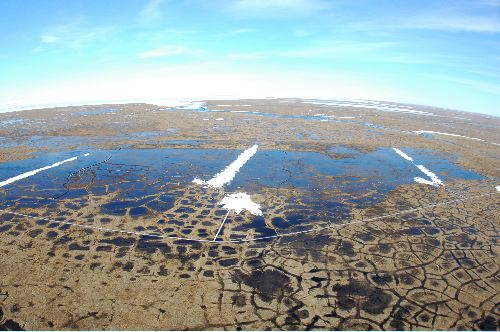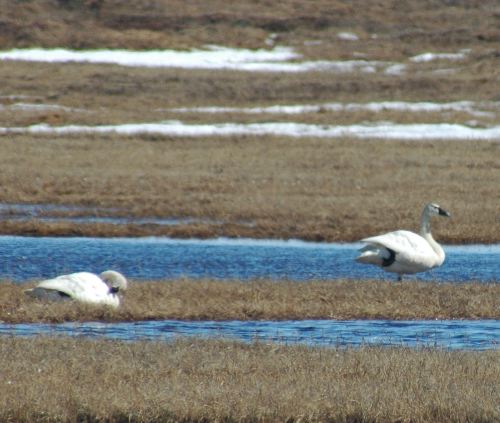* The sun comes shining as I was strolling The wheat fields waving and the dust clouds rolling The fog was lifting a voice come chanting This land was made for you and me… Thanks Woody Guthrie*
Recalling my last journal entry regarding the big dilemma of sand bags - how do we move 60+/- pound sand bags to our site, when we have to walk at least one mile (in some cases more) to the damn?
I did hear a great suggestion from PolarTREC teacher Jillian Worssam (http://www.polartrec.com/bering-ecosystem-study-08). She suggested that we use sand from an area near our site. That would be a great idea if there were sand close by and if we didn’t mind trashing the tundra. Thanks for reading and replying!
What they do is helicopter the sand **in. This can be very **dangerous. About 400 pounds of sand bags are placed into a gigantic bag and hooked to a cable, which is attached to the helicopter. So the sand bags are literally swinging from the helicopter. It is so dangerous that only the pilot is allowed to be in the helicopter while he is making these runs.
Chatter and emergency meetings have been going on for days about the helicopter. Around here the helicopter is a big deal!
 The helicopter collects bags of sand to carry to the dam
The helicopter collects bags of sand to carry to the dam
The National Science Foundation owns the helicopter. It is very expensive to get helicopter time. We only have about half of the bags moved and are hoping that we can get the helicopter again soon.
Until then, I am guessing that perhaps they need to find the little boy from the Netherlands to put his finger in the dike to stop the leaks – Anyone interested in being a town hero?
We do our fieldwork at the Barrow Environmental Observatory, which is 7,466 miles of arctic tundra. You need to pay $50 just to walk onto that property.
Lots and lots of research projects happen here. There are loads of projects dealing with carbon and methane as well as Lemmings, birds, soil temperature – you name it.
We are working on three different areas, wet, dry and natural environments. Each area is divided by black panels which creates a retainer to hold the water in. The dry area has pumps and is moving the water out. This photo shows the areas very clearly, you can see the snowy piers. If you look closely for a black strip you can also see where they created the barriers that serve as a dam.
 Photo taken from the helicopter by Paulo Olivas
Photo taken from the helicopter by Paulo Olivas
Notice the polygon shapes in the earth. Do you know what causes that? Please respond in the Ask the Team section. It is beautiful.
We have just started to train for this project, using the gas chamber at the sites because the snow is melting more and more everyday. However we do still have a build up of snow in certain areas, this is because of the man made structures, like the piers and buildings.
One thing is for sure it won’t be long until all of the snow melts. THINGS CHANGE SO RAPIDLY ON THE TUNDRA. One day you see snow, the next day you see brown grass and the next day you see green!
Bird of the Day
 Hanging out every day on Cake Eater Lake
Hanging out every day on Cake Eater Lake
Thanks for reading. Hugs and Kisses from the Top of the World

